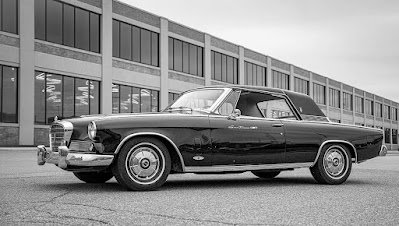Brooks Stevens (1911-95) was an American industrial designer, born in Wisconsin and active in Milwaukee. Stricken with polio as a child, he was encouraged by his father to practice drawing while confined to his bed, perhaps motivating his career in design. He studied architecture at Cornell University from 1929 to 1933 and established his own home-furnishings design firm in 1934 in Milwaukee. In 1936 he designed the first electric clothes drier. He transformed it from the manufacturers’ concept of a simple heated box into an apparatus that had a glass window built into its door. His works had mass appeal and were fuelled by the fact that many of his works were functional daily life objects.
In 1944, he established Brooks Stevens Associates, embracing a partnership of four executive designers and a staff of twelve. Some of the company’s automotive clients included Packard, Willys, Studebaker, Excalibur, American Motors and many others. Brooks was involved in the creation of the first snowmobile, the Evinrude outboard motor, and a mass-market jeep. The 1950 Harley-Davidson motorcycle, the 1958 Oscar Mayer Wienermobile in fiberglass, and the 1959 Lawn Boy lawnmower were also Stevens' designs. He may be best known for designing the 1962 Studebaker Hawk Gran Tourismo (above), and the Skytop Lounge observation cars for the Chicago, Milwaukee, St. Paul & Pacific Railroad's Hiawatha passenger trains.
Legend has given at least partial credit to Stevens for popularizing the term, planned obsolescence, which he defined as "instilling in the buyer the desire to own something a little newer, a little better, a little sooner than is necessary." Though debatable, his view was to always make the consumer want something new, rather than create poor products that would need replacing.


No comments:
Post a Comment